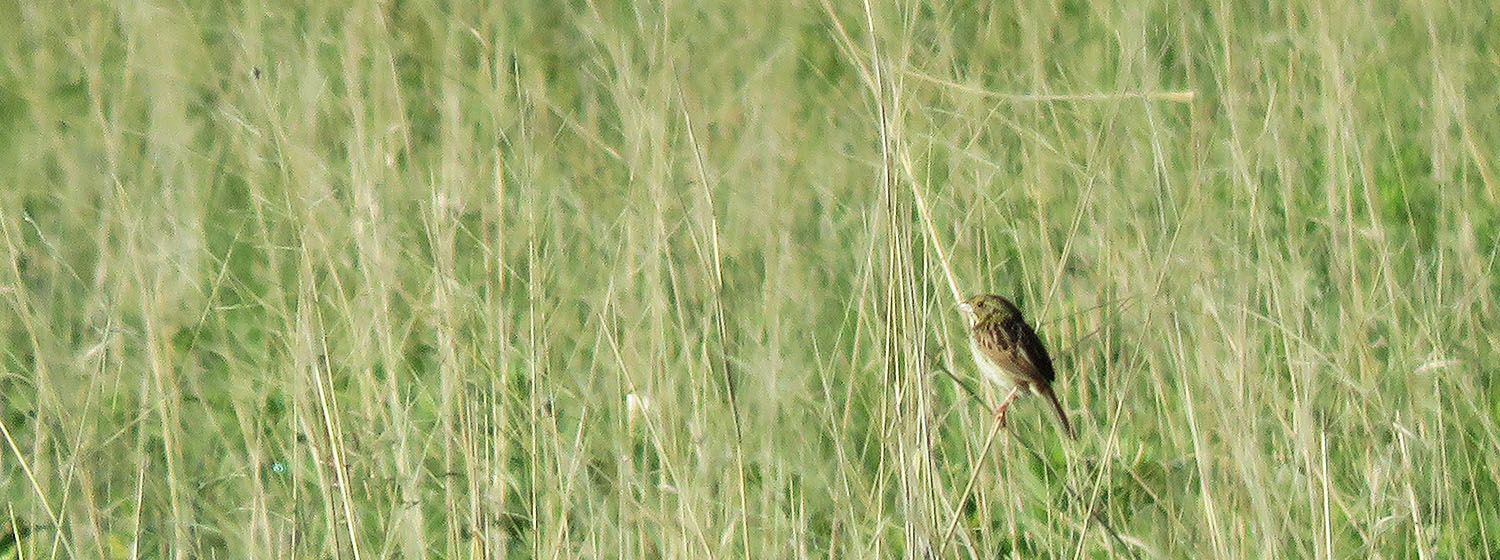This small brown bird sports a uniquely colored head with a yellow to olive tinge, and features a soft yet distinctive call that can be easily overlooked. If you are hoping to view this bird it is best to find an area with thick grass layered with dead grass beneath, commonly termed “thatch.” The Henslow’s Sparrow (Ammodramus henslowii) is notoriously hard to find, but a quiet human presence will cause these curious birds to perch and sing to delineate their territory. One reason why this species can be so hard to find is that they tend to have very specific habitat requirements where they prefer relatively thick grassland which retains some openness at the ground level. The growth habit of native grasses, which grow more distinctly in clumps or bunches as opposed to many exotic grasses that are sod-forming, represent the ideal habitat structure for this species. Like other sparrows in the Ammodramus genus (i.e. Grasshopper Sparrows) this species will often forage and escape predators by running along the ground as opposed to aerial acrobatics. In 1997 the Henslow’s sparrow was reviewed for consideration of protection under the Federal Endangered Species Act; however the data was insufficient to determine a listing. There are also a few large populations that have not declined. Since this time period, monitoring Henslow’s has been an important part of conservation efforts. For example, from 1966-2015 the breeding bird survey has seen a 1.53% decline each year in Henslow’s Sparrows, but from 2005-2015 there has been a 2.68% increase each year. However, the credibility of this data is low, due to the apparent natural sporadic distribution from year to year of this species. The state of the birds 2016 has listed Henslow’s Sparrow as a species in need of conservation, like many grassland birds, primarily because of threats to the habitat. Currently, the lands managed by the Crane Trust support one of just a few regular breeding populations in the state. Our goal is to better understand the habitat, including the prairie species composition and management regime that best promotes Henslow’s Sparrow habitat in the region given various weather variations.
KC King and Andrew Caven

